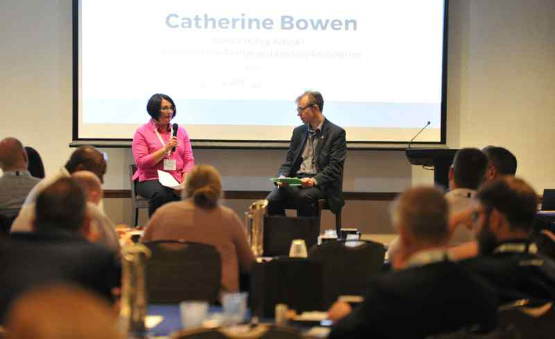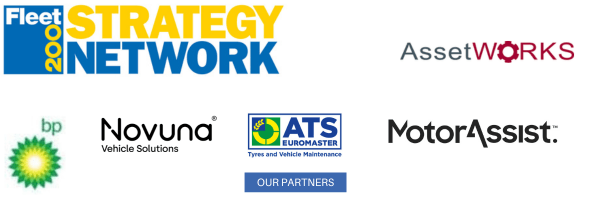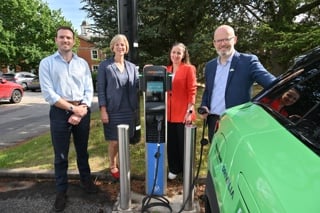The fleet industry's trade body has revealed new initiatives to improve the electric vehicle (EV) charging experience.
At the latest Fleet200 Strategy Network meeting, Stephen Briers, group editor of Fleet News, quizzed Catherine Bowen, senior policy adviser at the British Vehicle Rental and Leasing Association (BVRLA).
She also gave the BVRLA's take on the ZEV mandate, battery degradation and the transition to electric for van fleets.
Stephen Briers: The BVRLA been very active in encouraging people to adopt electric vehicles, but also working with government to help smooth and speed up the transition. How well do you think we're doing and what are those enduring challenges ahead?
Catherine Bowen: I think our members have been absolutely instrumental in helping people with the update to zero emission vehicles.
We've produced an annual report called our 'Route to Zero Report Card' and that's where we basically do an assessment as to where we are for cars, vans and trucks looking at supply and demand and infrastructure.
I think for cars it's a good picture. Looking at the SMMT data, some 70% of vehicles towards the end of last year were registered to fleets. We’re seeing huge increase in things like salary sacrifice schemes, and people taking company cars, especially now we have the certainty of benefit in kind taxation rates, which is something we were pushing for quite a while.
Vans, I think, are a challenge and are becoming more of a challenge. It’s largely down to infrastructure but also suitability of product and being able to match up range versus mileage.
With trucks there has been an awful lot of uncertainty. We recently did some research on infrastructure and I started to look at the truck transition and I think a lot of fleets just still don't know if it's going to be battery electric or hydrogen. Until we have that certainty, I think we've got way to go on trucks
SB: When you look at that charging experience across the three main cars, vans, and trucks, what are your views on how it can be improved? And how quickly can it be improved?
CB: We're getting quite a lot of questions about accessibility for vans - that is a key factor. There are obviously height restrictions and the bays can often be too short.
We've produced a Fleet Charging Guide to help local authorities, because I think it's really important that they understand the diversity of fleets. The national fleets might not necessarily come up in their stats but are going to be traveling into those areas, so we need to make sure that we're catering to those as well.
I think a challenge may come for the local authorities when they say ‘what exactly do you want and where do you want it?’. That's something that we're all going have to work together to be able to answer that because it's only fair if we're asking the local authorities to give us stuff that we can tell them exactly what it is we want.
Another one of the other big challenges is around the connections. A number of the fleets that we interviewed were talking about huge differences between different distribution network operator (DNO) areas. Costs is obviously an issue as well, I think there's some opportunities with sharing of infrastructure.
 SB: Hopefully fleets can get involved in those kinds of conversations with local authorities. What format that might take?
SB: Hopefully fleets can get involved in those kinds of conversations with local authorities. What format that might take?
CB: We've got two recommendations in the Fleet Charging Guide. One is where you've got lots of companies that need to put the infrastructure in and their depots will be in close proximity. In that case, perhaps the DNO could work with those companies when they're together.
The local authority also needs to bring interested parties together.
If people are looking to open up car parks that fleets could use potentially overnight, somebody needs to collate that and I think that's where potentially a local authority has a role.
SB: We've referenced van fleets a few times, what can be done to help speed up that transition to zero emissions?
CB: I hope that the ZEV mandate might have a role to play. A lot of people are pushing for softer targets. We did say that we needed tougher targets from 2026 because there seems to be an assumption that we would be heavily reliant on hybrid vans and we're not seeing any demand in that way.
We need more of a hockey stick from 2026 to get closer to 100% by 2030. I really hope that it can stimulate some innovation and some investment in this area and we get to see some fit for purpose products in the right sort of price range that's going to help people meet their requirements.
Infrastructure has a large role to play, but I think a lot of it is down to fit for purpose products that I hope the ZEV mandate can encourage
SB: Is there anything you feel is missing from the ZEV mandate or anything you would like to see added in?
CB: The target for cars seems quite sensible. Particularly now that we have a bit of time certainty, which is a big thing for us.
Vans, I am more concerned about and that's why I really do hope that we don't see any softening of targets.
There are some updates in the mandate with regards to wheelchair accessible vehicles and fire pumps that were we're going to comment on, but the big thing is this ongoing engagement and review and making sure that we are looking at how everything's moving.
We haven't talked about infrastructure targets, like some other organizations have, but we do need to keep an eye on how infrastructure is evolving, and whether it's going to meet fleet user needs.
SB: There's been some Government announcements around measuring and monitoring battery degradation for electric vehicles. What's the BVRLA's take on that, particularly when it comes to things like fair wear and tear and potentially RV setting down the line?
CB: It’s really early days. We had an event last week looking at battery health planning. We're sitting on a group with the Office for Zero Emission Vehicles looking at used BEVs and how we can make sure that we have a healthy market for used BEVs.
We have got a bit of a used BEV problem. We need to make sure that they are attractive. A lot of consumers talk about battery degradation as being one of the reasons that they don't take a use EV. There’s a lot of conflicting evidence about what it actually looks like and what causes it. I think there is going to be a role for us particularly in educating our members and our members educating their customers about how you can preserve the battery.





















Login to comment
Comments
No comments have been made yet.